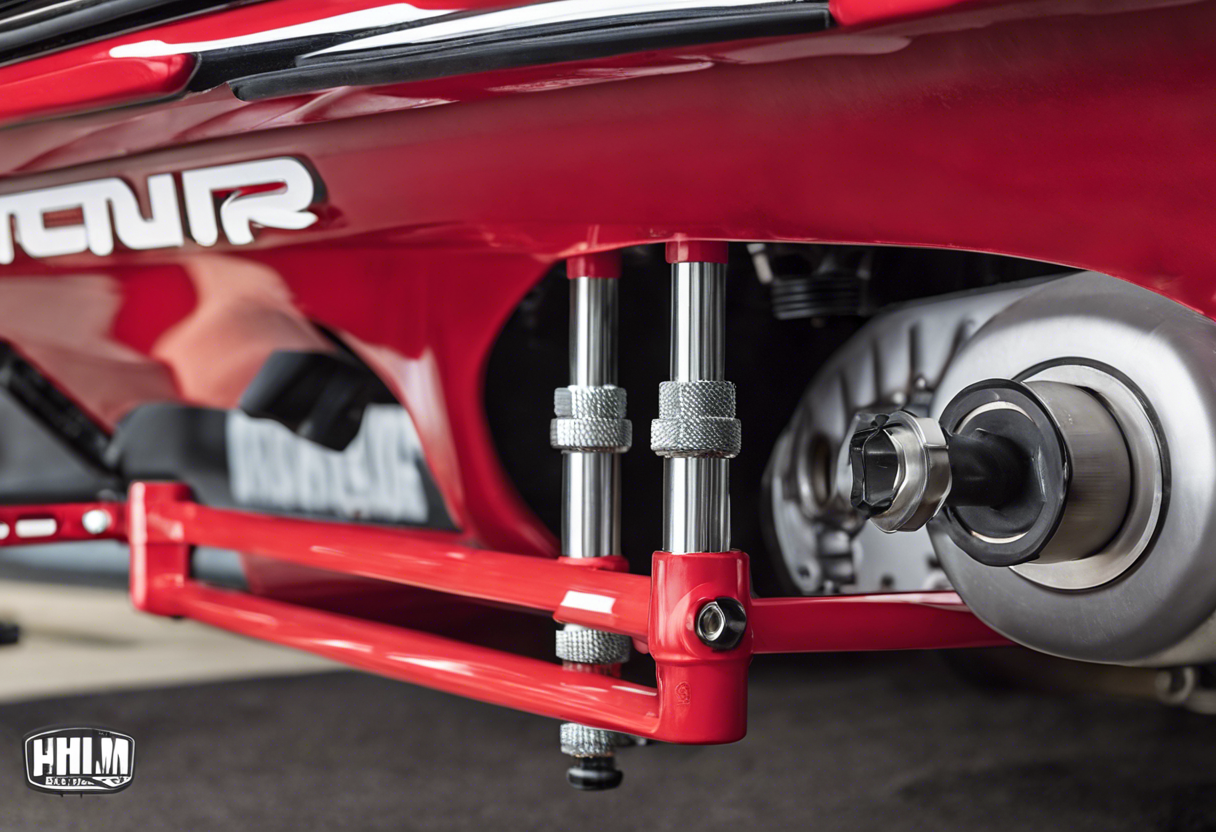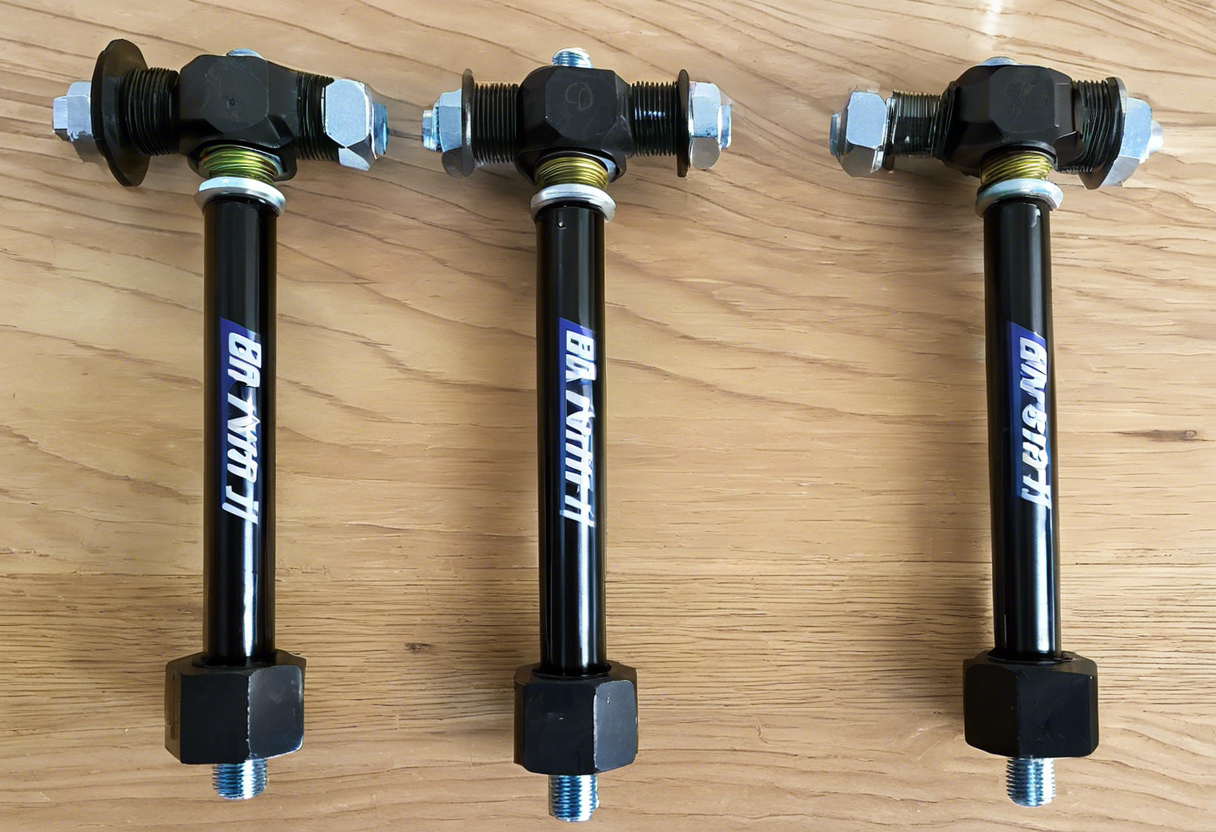Sway bar links, also known as stabilizer links or anti-roll bar links, play a crucial role in a vehicle’s suspension system. Their primary function is to reduce body roll during cornering, improve road grip, and enhance overall stability. Adjustable sway bar link offer a customization advantage over fixed links, providing the flexibility to fine-tune suspension settings for different driving conditions and preferences. They are particularly valuable for performance enthusiasts and those who frequently adjust their ride height for either aesthetic or functional purposes, such as motorsports or off-road use.
Understanding Sway Bars and Their Function in Vehicle Dynamics
Sway bars, also known as anti-roll bars or stabilizer bars, are essential components in a vehicle’s suspension system. They designed to:
- Reduce body roll during cornering or over road irregularities.
- Maintain maximum tire contact with the road.
- Improve stability and handling.
When a vehicle turns, weight shifts to the outside wheels, causing the body to tilt or ‘sway.’ A sway bar connects the left and right wheels through a torsion spring, which resists this tilting motion. The rigidity of the sway bar determines the amount of resistance to vehicle roll. With the connection, the sway bar distributes the force between the wheels, helping to counteract the natural roll of the chassis and maintain balance. This process not only enhances the driver’s control over the vehicle but also contributes to passenger comfort by minimizing the lateral motion experienced during sharp turns or evasive maneuvers.
The Mechanics:
How Adjustable Sway Bar Links Work
Adjustable sway bar links are critical components in a vehicle’s suspension system designed to reduce body roll during turns. Their central mechanism involves:
- Connecting the sway bar to the suspension at both ends.
- Maintaining optimal alignment by adjusting the length of the link.
- Featuring threaded shafts or turnbuckles for precise fine-tuning.
- Allowing the adjustment without needing to remove the link from the vehicle.
By facilitating length alteration, these links help maintain the sway bar’s position regardless of the suspension’s height, ensuring that it effectively counters lateral forces during cornering. This adaptability is particularly useful when altering a car’s ride height for performance or aesthetic purposes.
Benefits of Upgrading to Adjustable Sway Bar Links
- Improved Handling: Adjustable sway bar link allow for fine-tuning of a vehicle’s suspension, which can lead to more precise steering and better cornering performance.
- Customization: They cater to personal driving styles and the specific demands of different driving environments, enabling drivers to tailor the balance between comfort and performance.
- Durability: Often constructed from high-quality materials, these links are designed to withstand the stresses of vigorous driving conditions.
- Compatibility: Adjustables are versatile, fitting a range of suspension setups from stock to highly modified, making them a practical choice for enthusiasts who plan future upgrades.
- Ease of Installation: Designed for accessibility, adjustable links can often be installed without professional help, reducing overall upgrade costs.
Comparative Analysis:
Adjustable vs Fixed Sway Bar Links
Adjustable sway bar link provide the flexibility to fine-tune vehicle suspension, catering to different driving conditions and preferences. They are a favorite among car enthusiasts who engage in activities such as track days or off-roading, where suspension adjustment can yield significant handling improvements.
Fixed bar links, on the other hand, are set to a factory-defined length and offer a no-compromise solution for everyday drivers. They typically require less maintenance and are easier to install, but lack the customization that adjustable links offer.
Key Comparisons:
- Customization:
- Adjustable links offer a range of settings for personalized handling.
- Fixed links provide a single, consistent setting with no adjustment.
- Performance:
- Adjustable links can improve cornering and stability for performance drivers.
- Fixed links are sufficient for standard driving conditions.
- Installation and Maintenance:
- Adjustable links may require more frequent checks and adjustments.
- Fixed links are generally set-and-forget, demanding minimal upkeep.
- Cost:
- Adjustable links are often more expensive upfront due to their complex design.
- Fixed links are a cost-effective choice for a straightforward replacement.
Car owners must weigh these factors against their driving needs and budget to determine if the investment in adjustable sway bar link is warranted.
Adjustable Sway Bar Links and Vehicle Performance: A Closer Look
Adjustable bar links play a pivotal role in vehicle suspension systems. These components connect the sway bar to the vehicle’s chassis, enabling the fine-tuning of suspension stiffness and roll.
- By adjusting bar links, drivers can alter the car’s balance, improving cornering stability and reducing body roll.
- Enhanced handling becomes evident, particularly in performance or racing vehicles that demand precise suspension tuning.
- For off-road applications, longer adjustable links can accommodate the increased suspension travel.
- The ability to quickly adjust these links facilitates swift setup changes to match driving conditions, optimizing performance.
- Despite these benefits, consideration of a vehicle’s specific needs is crucial in determining the value of the investment in adjustable links.
Customization and Tuning:
Tailoring Your Ride With Adjustability
For car enthusiasts and performance seekers, adjustable sway bar link offer precise control over the vehicle’s suspension system. By enabling minute changes in the sway bar’s position, drivers can:
- Alter the balance of understeer and oversteer
- Optimize suspension behavior for varying loads
- Refine handling for different racetracks or driving conditions
The flexibility afforded by these links allows for a tailored driving experience.
Installation Process:
What to Expect
When investing in adjustable bar links, car owners should prepare for a meticulous installation. The steps typically include:
- Elevate the vehicle using a lift or jack stands to access the suspension system.
- Remove wheels, if necessary, to improve access to the sway bar.
- Detach the existing sway bar link, often requiring the loosening of bolts or nuts.
- Secure the adjustable links with the provided hardware, ensuring everything is tight and correctly positioned.
- Adjust the length according to the desired performance or manufacturer specifications.
- Perform a road test to ensure the links are operating correctly and make adjustments as needed.
Professionals or experienced DIY enthusiasts are best suited to manage this installation, as it requires specific tools and knowledge of suspension geometry.
Cost-Benefit Consideration:
Analyzing the Investment
When contemplating adjustable bar links, one must meticulously assess costs versus benefits. Benefits to gauge include improved handling and customization options for driving conditions or performance aspirations. Vehicle type, usage frequency, and performance requirements are pivotal factors. An enthusiast regularly tracking their car may find the investment justifiable. Conversely, for casual drivers, stock sway bar link might suffice, economically speaking. This analytical approach ensures a decision that aligns with personal needs and financial constraints.
Maintenance and Longevity of Adjustable Sway Bar Links
Adjustable sway bar link require regular inspection to ensure their optimal performance and longevity. To maintain these components:
- Periodically check the tightness of all mounting hardware.
- Inspect the condition of the bushings and replace if signs of wear or degradation are visible.
- Lubricate the links if they have grease fittings to prevent corrosion and reduce wear.
- Avoid exposing the links to harsh chemicals or road salts that can accelerate corrosion.
Regular maintenance helps preserve the functionality and investment made in superior handling performance.
Real-World Applications:
Who Can Benefit Most?
Adjustable sway bar links are highly beneficial for:
- Performance Enthusiasts: Individuals who participate in motorsports or enjoy spirited driving stand to gain significantly. The fine-tuning capability allows them to tailor their vehicle’s handling to specific tracks or driving conditions.
- Off-Road Adventurers: Drivers who traverse challenging terrains can adjust their vehicle’s suspension for better off-road performance, providing enhanced stability and control on uneven surfaces.
- Towing and Hauling: For those who frequently tow or carry heavy loads, adjustable links can help to maintain a level ride height, improving safety and comfort.
- Kit-Car Builders: Custom vehicle constructors can take advantage of the adjustability to match non-standard suspension setups or aftermarket components, ensuring optimal performance.
- Day-to-Day Motorists: Regular drivers seeking improved ride quality and reduced body roll in everyday driving situations can also benefit from the suspension upgrades that adjustable sway bar links provide.
Concluding Thoughts on the Value of Adjustable Sway Bar Links
When considering the benefits of adjustable sway bar links – fine-tuning of vehicle suspension, enhanced handling, and improved performance particularly under diverse driving conditions – it’s evident they offer a valuable upgrade for enthusiasts and professionals alike. Ultimately, whether the cost is justified is determined by the individual driver’s priorities and the type of driving they engage in most frequently.
FAQs About Sway Bar links
for more info : https://manualwheel.com/symptoms-of-a-fa…rol-arm-bushings/
for more info: https://www.amazon.com/Bar-Links/

